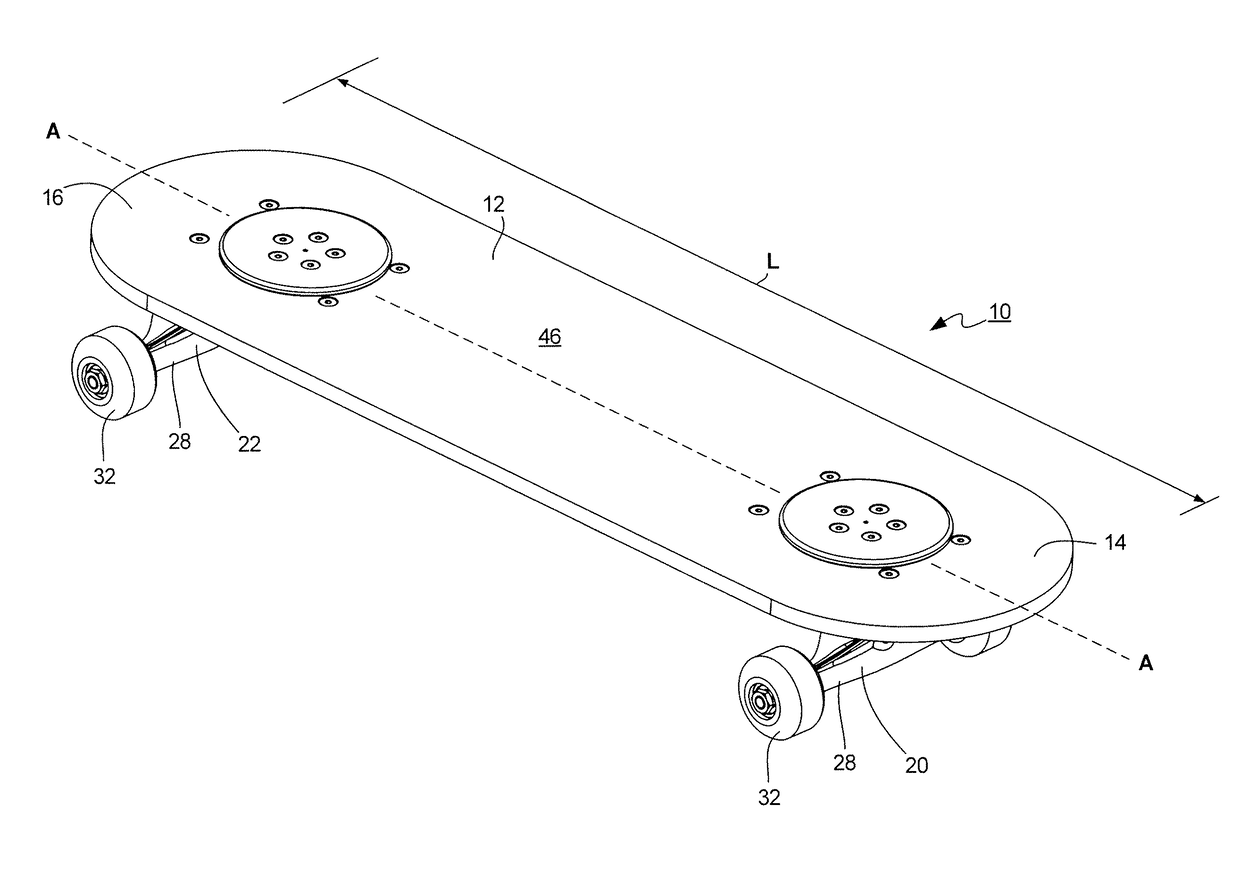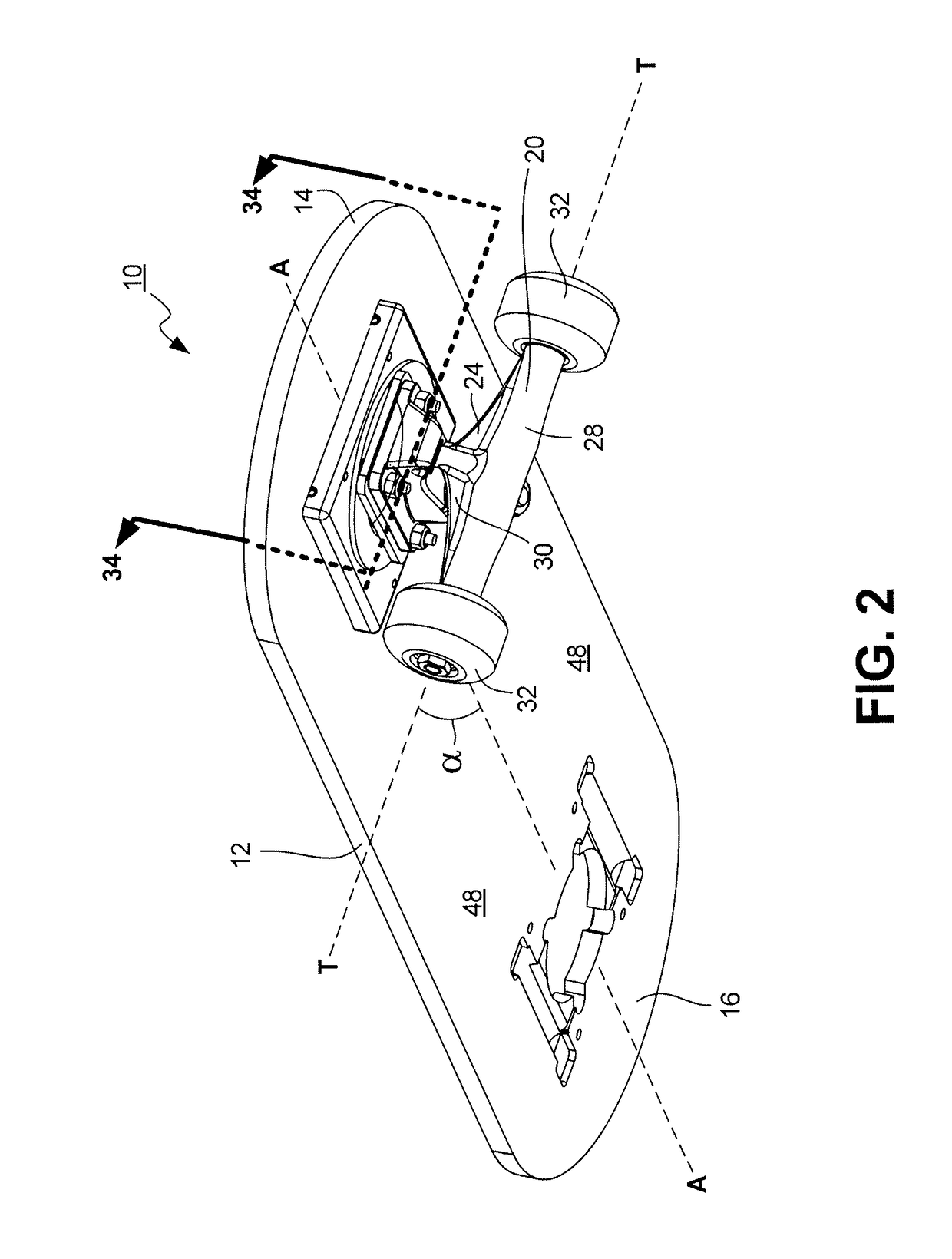Roller board with one or more user-maneuverable trucks and north-seeking return mechanism
a technology of roller boards and return mechanisms, which is applied in the field of self-propelled roller boards, can solve the problems of affecting the maneuverability of the device, the device requires more balance and coordination than many users can muster, and the steering shaft can interfere with the maneuverability of the aerial trick
- Summary
- Abstract
- Description
- Claims
- Application Information
AI Technical Summary
Benefits of technology
Problems solved by technology
Method used
Image
Examples
Embodiment Construction
[0063]A roller board device like a skateboard or scooter operated by a user with one or more user-maneuverable wheel assemblies that are automatically returned to their “true north” position is provided according to the invention. The roller board device comprises an elongated deck having a longitudinal axis and one or more openings extending through the deck, the deck having a top surface and a bottom surface; at least one wheel assembly comprising a truck and axle with at least one wheel rotatably mounted to the axle; a rotation assembly operatively engaging and extending through the opening in the deck, one end of the rotation assembly being connected to the wheel assembly positioned below the deck, the other end of the rotation assembly being connected to a user interface member extending upward beyond the top surface of the deck; and a north-seeking return mechanism secured to the deck, the north-seeking return mechanism having a housing containing an engagement member movable ...
PUM
 Login to View More
Login to View More Abstract
Description
Claims
Application Information
 Login to View More
Login to View More - R&D
- Intellectual Property
- Life Sciences
- Materials
- Tech Scout
- Unparalleled Data Quality
- Higher Quality Content
- 60% Fewer Hallucinations
Browse by: Latest US Patents, China's latest patents, Technical Efficacy Thesaurus, Application Domain, Technology Topic, Popular Technical Reports.
© 2025 PatSnap. All rights reserved.Legal|Privacy policy|Modern Slavery Act Transparency Statement|Sitemap|About US| Contact US: help@patsnap.com



